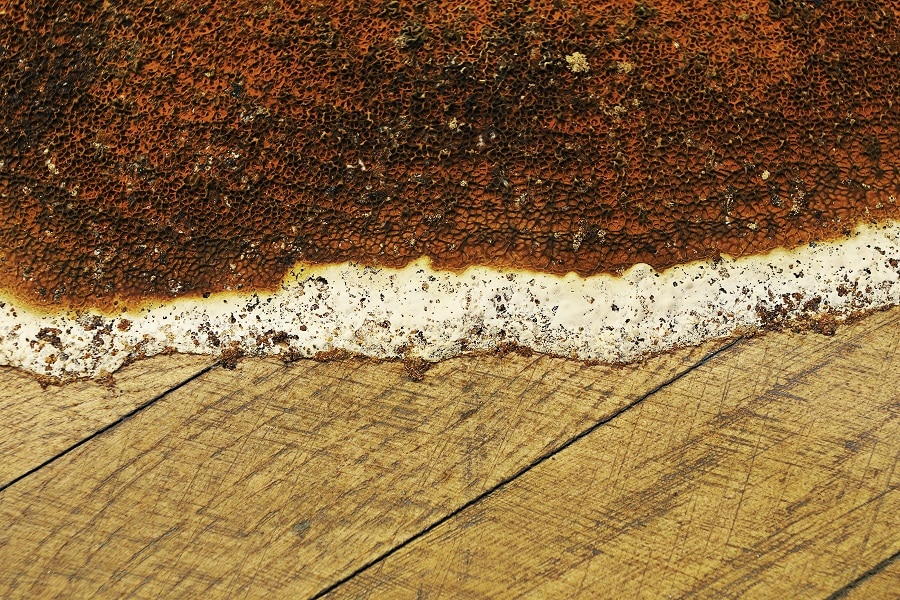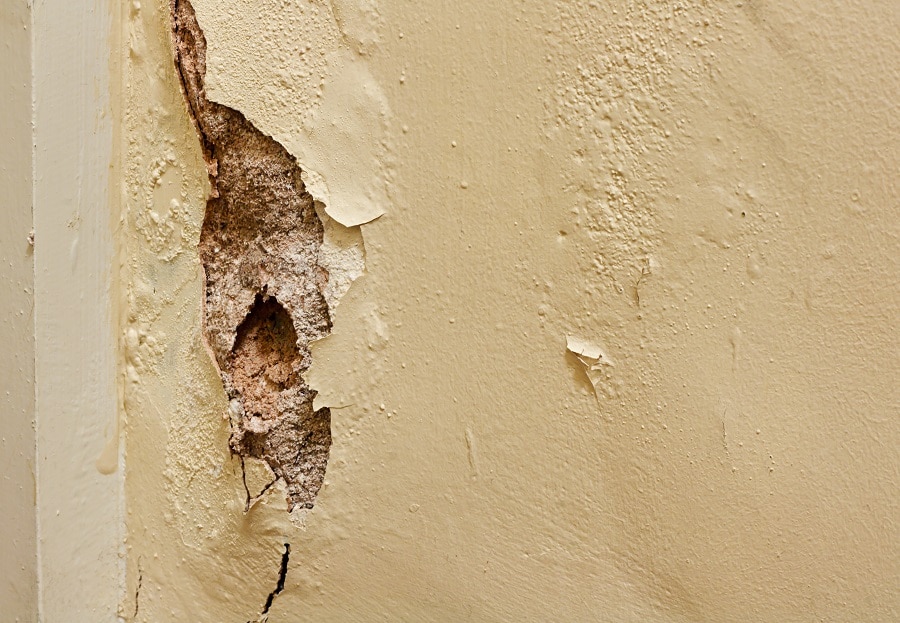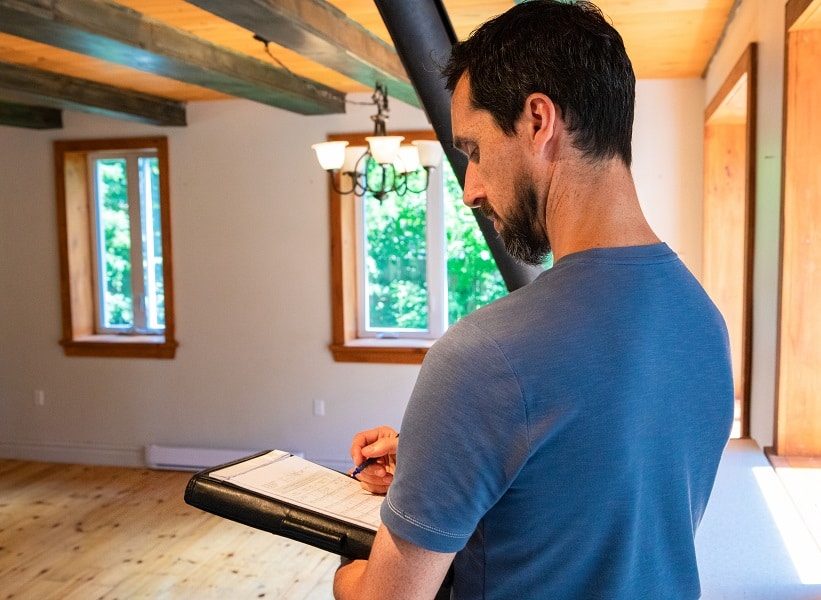What is dry rot?
Wood-decay fungus is often called dry rot. Wood is cracked by Sporocarp (fungi), as Mycelium absorbs wood, dry rot results in fine dust spores, decomposition of wood and dry rot. Dry Rot fungal spores require a suitable place to land and start their colonies before spreading through the underlying wood. Many of the spores are already present in woods that are already affected by dry rot and in the soil.
This ensures that even treated wood will be re-infected with dry rot if it is wet enough (i.e., below 15 percent relative humidity). Dry Rot causes significantly greater damage than Wet rot, you may be shocked to hear that dry rot fungus can attack the structural timber in your property whilst remaining undetected. It often occurs where you’re not looking. It could be under the plaster, beneath your floorboards, or even in your loft. This is why it’s essential to know the signs and symptoms of dry rot and to get it treated quickly.
Our Guarantee
- upto 30 year guarantee
- customer focused team
- 20 years combined experience
- portfolio of satified customers
- attention to detail
- Construction line accreditation
- public liability insurance
- CHAS accreditation
What is the difference between dry rot and wet rot?
Dry rot and wet rot have distinct spores/species, which means they look different. The biggest difference between wet and dry rot is the significant moisture content that wet rot needs to spread. One of the main differences between wet rot and dry rot is that wet rot spreads much faster. That’s right because timber based products never come into contact with mycelium – the fungus that causes Dry Rot to form. Dry rot is the most severe type of decay of fungus in a property, spreading too much of the structural timber and damaging it whether wet or dry and causing a greater risk of structural damage throughout a property. Wet rot fungus, on the other hand, happens more frequently but is less serious, usually rotting is limited to areas where the wood becomes and stays wet.
Call Our Sussex Damp Experts team now for quote, consultation and advice:
Call on 01273 257 765.
What are the causes of dry rot?
A lot of fungi species cause dry rot. The most commonly found in the East-Grinstead is Serpula Lacrymans. If you don’t fix it soon, it could cause serious damage to your home. It can have a major negative impact on the structural integrity of timber, and also the integrity of your home. Dry rot attacks when you have an unhealthy amount of moisture in your timber. This attracts the fungus that is going to use this moisture to produce nutrients. The expression “dry rot” is used to contrast between “wet wood” and “dry wood rot.”
Wet wood feeds on dry rot. While fungal spores need over 30% wetness to generate hyphae after this, these hyphae only need 20% wetness to survive. These hyphae can grow into a fungal body called a mycelium, which can also spread to find more timber in stone and brick. Hemicellulose, cellulose, and H2O will be removed from your timber by this fungus, only leaving a weak “skeleton” structure of the original wood. You will require an expert survey to see if the rotting wood is affected by dry rot or by another fungus. This is very important as the treatments for these damages will differ depending on the exact cause.

The dangers of dry rot in East-Grinstead
Dry Rot Effect on your Property
Dry rot can be highly detrimental to the integrity of your home. Dry Rot will slowly and silently break down the structural timber of your property. In serious cases, this can trigger various parts of your house to break apart. Dry rot is actually a fungal infestation that penetrates through the mortar and spreads across the brick or stone. That is why routine checks are necessary.
Dry Rot is a critical problem that requires urgent maintenance and treatment. When fungus is evident, you need to call a restoration expert right away to prevent mold growth from worsening any damage that may be apparent. If you think that you might have an issue with dry rot or dampness in your home, check out Sussex Damp Experts today.
Dry Rot Effect on Your personal health
Actually it is not the fungus that causes the damage. If dry rot goes undetected, it can compromise the structural integrity of your home and cause sickness. This is particularly hazardous for the adults, children and people with respiratory conditions.
What are the Warning Signs of Dry Rot?
The earlier you discover dry rot, the less time and money you’ll need to spend treating it and initiating remedial works. A full assessment by a professional is recommended if you experience any of the following signs and symptoms.
-
The beginning of the dry rot cycle
Spores for dry rot are carried across the wind. If they are taken to the wood, they may begin to feast on it. The fungus then hyphae will germinate and start to spread through the timber if the wood gives them enough nutrients. The hyphae grow and join up into a lot of tangled spaghetti-like threads called mycelium. Mycelium might be light gray or solid white. The mycelium that compose these mushrooms are very powerful and can leach into porous areas like mortar, bricks and plaster to try and reach more timber.
-
Your timber is damaged.
You will see that the core of your timber has become soft and dry. Often this can also cause the timber to collapse. You will probably note the dry rot blacken the color of your wood. Cuboidal cracking can be caused by dry rot. Cuboidal cracking is when timber breaks up into cubes that are around 50 mm in width. The fungal deterioration will also spread further into the wood, causing hyphae the white fungal growth. Hyphae is a slime-mold and is an early symptom of dry rot.
-
Your timber will smell.
If you smell a strong, fungal, dank and musty odour in your timber, it is likely to be affected by dry rot. This can occur even if you can’t see a dry rot outbreak. The smell of mold, however, is not a definite indicator that there are no signs of dry rot.
-
Your timber will have fungus bodies on it.
This is the final stage of dry rot and the most noticeable. Fruiting bodies like Mushroom can start to attach themselves to your wood. As the timber dries out, the fungus inside can no longer feed off the timber, in order to survive, it pumps its spores out to infect more wood.
-
Your timber will have spore dust.
Spores of the dry rot fungus don’t just occur in woods already affected by dry rot. Yet, if splotches of rusty coloured dust accompany dry rot spores, it can be indicative of dry rot. Fruiting bodies release this spore dust in the last stage of the dry rot cycle.
Dry Rot Treatment in East-Grinstead

A dry rot attack would not happen until the moisture level is over 20 percent. The first prevention step to eradicating the presence of the fungus is the monitoring of moisture levels in your property. You are now in charge of the moisture levels. We advise you to commission an expert in order to treat dry rot.
Sussex Damp Experts are able to assist you with any contaminated timber removal and any remedial works. Affected timber removal should be handled by a professional. A professional damp proofing expert will know the required treatment. While some treatments are instilled into the timber, others on the timber’s surface. Preventive treatment options are many, Such chemicals require precise concentrations and can have adverse side effects if mistakenly inhaled or injected.
Your timber may require Boron roads injection from a professional. Boron is a harmful item, therefore the protective clothing is worn by damp proofing experts. Due to their specialist experience and thorough inspection, our damp experts will be able to identify and address any damage that dry rot may have caused in your home. Dry rots are a serious problem and can lead to serious issues if left untreated. Dry rots are a serious problem and can lead to serious issues if left untreated. Sussex Damp Experts provides quick solutions to fix problems associated with foundation and basement mold at affordable prices. Please don’t be late If you think you have a problem with dry rot, call 01273 257 765 for a free survey, and effective treatment today.
How can you prevent dry rot damage in East-Grinstead?
The first step in treatment is to avoid dry rot. A rot infestation is caused by water penetrating the timber and it’s inability to dry out, either due to poor ventilation or air-tight construction. Any activities that prohibit them from evolving are present here: Confirm that your house doesn’t have any leaks. Make available sufficient ventilation.
Correctly ventilate the attic and insulate it. Ventilate crawl spaces correctly. Waterproof the exterior of your home by sealing the basement and crawlspace floors with our durable, waterproof sealers. Examine all areas of the roof and wall surrounding the chimney from top to bottom, ensuring that water is being directed away from the chimney properly. Maintain clear sinks and downspouts. It’s a very good idea to check your pipes and heating system for leaks when using a wet system The best way to reduce the chance of dry rot is to minimize moisture levels, considering the moist conditions needed for dry rot fungus in feeding and germinating. If you have a leak, plugging the leak can help reduce further damage to the house.
Speak to a Dry Rot specialist in East-Grinstead
We are equipped to fix any wet or dry red issues that concern your property or your house. We will perform a full damp survey of the property and give you a free estimate before we start any work. Over the years, we have helped thousands of East-Grinstead homeowners with their damp problems, and we can help you too. Call us now to book a free survey and quote 01273 257 765. I am an expert in dry rot and timber treatment. I can visit your property to identify the extent of the infestation and recommend a solution specific to your requirements. We are not tied to any special interest groups or companies, and can therefore give you advice on the treatments that will be best for you.

All of our surveyors are fully qualified and will be able to identify everything from Dry Rot to moisture ingress, including the solution, and give you a fair cost for any remedial works. Dry rot is a long term problem, and can get worse if left unchecked, if you notice any signs of damage on your fence, it is better to contact our contractors right away. The South Damp Proofing services will assist you in solving your dry rot dilemma by e-mail or calling the phone 01273 257 765.
FAQ
Should dry rot be restored or replaced?
A certain level of dry rot can be repaired, but whether the damaged areas provide the house with structural stability, such as beams and joints, or even flooring, it is not recommended. Replace the wood in such a situation instead of repairing it. Whether you restore or rebuild the wood, it is better if you avoided the conditions that caused the rot to flourish in the first place or risked it coming back. Your roof leaks, broken gutters, or downspouts, plumbing leaks or insufficient ventilation should be inspected when considering a roof moisture accumulation You may consult a specialist to find and repair the problem.
Will you be able to treat my Dry Rot problem effectively?
With our expertly trained surveyors and specialists, a dry rot problem can be treated, rectified, and your timber can be protected for the future.
How do I discover how far Dry Rot has spread?
If you have traced the dry rot fungus quickly or not, a professional will identify the source of the problem. They will be able to trace the fungus in the different masonry and plaster from which it has spread.
How much can dry rot widen?
Dry rot spores can spread in anyplace with the right environmental settings. The reason is that they are carried in the atmosphere. If your timber has a moisture content of around 20%, and if it is in the open air, these conditions are attractive to dry rot fungus. This suggests that fungus groups can disperse to multiple materials. If dry rot is spreading across masonry and plaster, and if it reaches more timber to feed off where the timber is moist. It can widen further. Dry rot fungus needs five things to survive: the right temperature, drive rot spores, moisture, oxygen, and the food source. In any home in Brighton most of this is present.
Will dry rot stretch?
What should I do to control dry rot?
First identify the reason for your timber moist before solving it. A different treatment shall be given if the reason for your timber moisture is outside.
What are the effects of living dry rot unchecked?
Dry rot is the most insidious form of moisture that can infest property and cause permanent damage to the building if left untreated. Sometimes, once the harm is already done due to the places in which the problem is likely to be the presence of dry rot does not come to light.
Is dry rot stringent?
Dry rot can be particularly common in wooden properties, so it is essential that early signs of dry rot are identified before the damage becomes too severe.
How am I meant to know if I have dry rot?
A timber survey will assess how your timber is affected by being exposed to moisture. Later on, fruiting bodies and mycelium will be noticeable in the drive rot life-cycle.
Where can dry rot grow?
Dry rot attacks and rots timber that’s been in contact with water for a long period of time. Although it can often be mistaken for other problems in its early stages, it is important to seek advice. In every structure, both old and new, dry rot can grow. The reason being that it is caused by moisture and wetness that happen anyplace. Dry rot can be caused by leaks or weather, meaning the type of property does not affect it.




